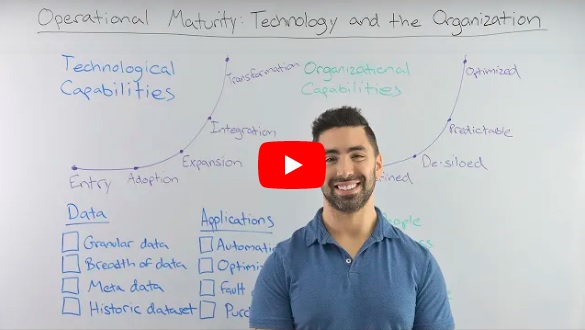How to Achieve Operations Maturity

Keeping all the people in an operation focused and enthusiastic about coming to work every day is impossible to achieve without defined processes, which support common goals. To accomplish this, a fully trained and empowered workforce is required that is accountable at the lowest level possible to achieve these goals and is recognized accordingly. A well thought out investment in the workers will give your operation a happy workforce and a competitive advantage.
To achieve this, the workflow needs to be defined so that a group of employees can share responsibility for producing a complete product or a large component of that product. It’s about defining a process and leveraging existing resources. In order to complete this goal it’s necessary to cross train people in the operation for multiple tasks. For example, an operator could learn maintenance and processes on various pieces of equipment.
This is sometimes called cellular manufacturing where the machines are taken out of the production line structure and designed in such a way that all the people in that cell have the responsibility to produce a defined product. The measurements are changed to reflect what is being achieved in a particular area. This transformation cannot begin overnight.
The first step is identification of the cell and all the functions supporting that cell and what training and process changes would be required to implement the new structure and responsibilities. Most organizations are structured along functional lines. That is manufacturing, quality, safety, materials, purchasing, etc.
Afterward, identify all the responsibilities for those particular processes and how to isolate that responsibility within the identified cell. Make sure as the cell is being created that all the potential members are included in the design so they are aware that things are going to change. After the processes are identified then the roles must be agreed upon. Once the roles are agreed upon then measurements are established which are again a part of the responsibilities for the process.
When establishing the metrics they must be S.M.A.R.T. goals. Remember S.M.A.R.T means Specific, Measureable, Achievable, Realistic and Time-based. In the case of building a cell these are key performance indicators. Make sure as the measurements are being established all members feel they can achieve them. It’s not okay to establish metrics that the members of the cell don’t agree are the right measurements and that they are within their control.
If the processes are mapped, roles and responsibilities agreed upon, and measurements are established you’re on your way to becoming a totally integrated cell with total ownership and a mature structure. You went from a functionally basic and matured structure into total integration. Let’s define the levels of organizational maturity below.
- Basic – Employees have the minimum skills and accountability required at basic levels and they remain functionally oriented. It is assumed that everyone meet basic maturity levels.
- Maturing – Employees demonstrate additional skills and are beginning to take ownership for their performance allowing incremental improvements to near term goals. This level is achieved through training and streamlining of work processes and coaching.
- Mature – Employees have assumed full ownership, demonstrated skills, and have accountability for excellent performance facilitating continuous improvements to meet long-term performance expectations. This level requires significant training, coaching, optimizing of work processes and may require capital investment and organization realignment.
The elements of the journey to a mature organization begin with selecting employees that have the skills and desire to begin working toward being part of a self-directed workforce. The next step is the assessment of the actual skills that those selected possess and determining the knowledge transfer required to make sure all the employees are on an equal footing. Afterward, it is necessary to determine the new role expected of the supervisor and train them in their new role. The supervisor is the cornerstone in achieving the agreed upon performance targets. It’s important to recognize all a cell achieves as it’s developed and when it’s implemented and when it achieves the highest level of maturity.
Too many organizations do not train the supervisors in how to manage their organization and what to do in case there is an employee that cannot achieve the objectives established. Any time an employee does not achieve a target agreed upon it is the employer’s responsibility, because there has not been sufficient training of the employees to know how to overcome their missed opportunity to achieve the target. Don’t blame your employees! Look for what you as the supervisor could have done to help achieve success.
Your path to business success.

